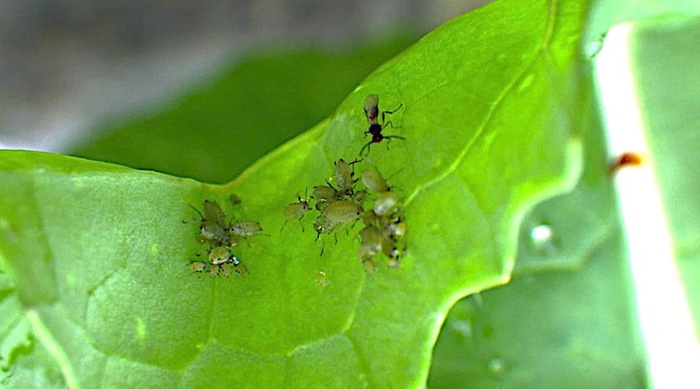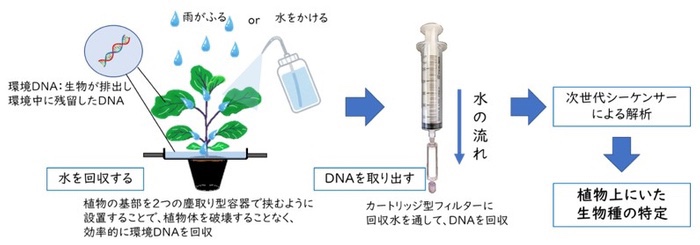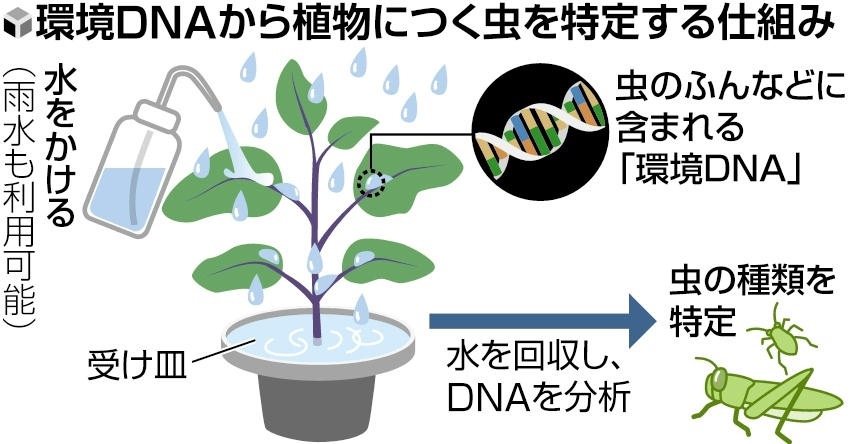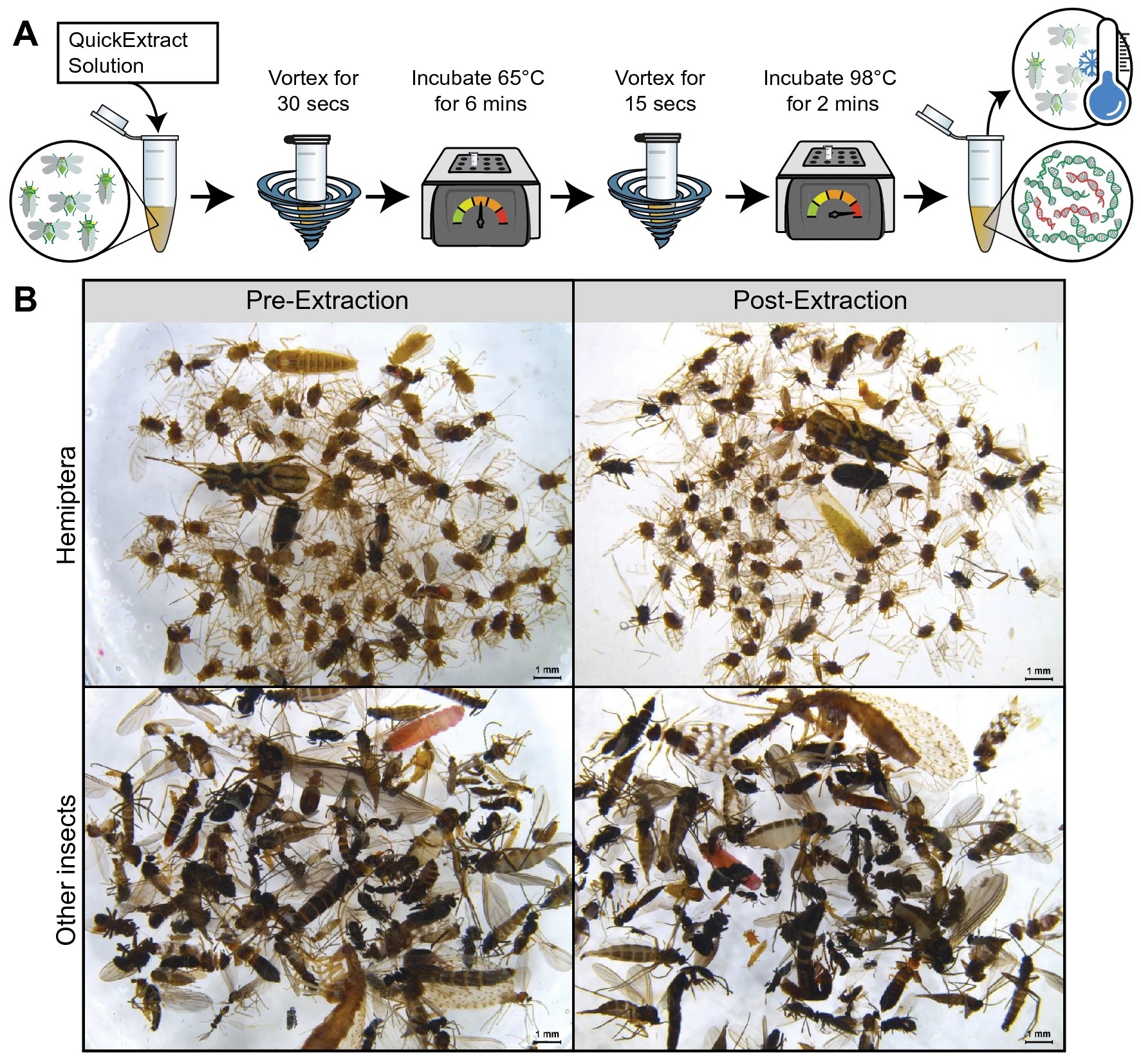
State of various insects parasitizing on plants
Plant Pest Control: What Insects Infested?
-Analysis of DNA contained in insect droppings and saliva-
Faculty of Agriculture, Kinki University: Hakubi Center, Kyoto University: Faculty of Advanced Science and Engineering, Ryukoku University
The research group has developed a method for detecting a wide variety of insects on plants using DNA contained in insect droppings and saliva.
Water and rain washes the surface of the plant and collects it as it falls to the ground along the leaves and stems.
By extracting environmental DNA from it, we can clarify what kind of insects existed on the plant.
Results of this research:
In the future, it is expected to be applied to biodiversity surveys and pest management.
Papers on the subject:
It was published online in the academic journal “Scientific Reports” on Friday, May 12, 2023.

[Outline of research]
Developed a method to collect the DNA of insects left on plants from plants all at once
Environmental DNA is extracted from water flowing on plant surfaces and analyzed using a next-generation sequencer
Expected to be used for biodiversity surveys and surveys of pests and natural enemies of agricultural products
ーNEWSCAST
https://newscast.jp/news/9496350

Expectations for pest control, teams such as kindergartens announced
-Sprinkle water on plants to identify insects on leaves and stems-
Focus on “environmental DNA”:
We focused on the DNA released into the environment, such as rivers and soil, from excreta and body fluids of living organisms.
The team watered a total of 37 eggplant and cabbage plants and collected the water that ran down the leaves and stems.
“We were able to visually confirm seven species, including moth larvae and aphids,” on the leaves.
Analysis of recovered water:
In addition to these, “22 types of unidentified DNA such as grasshoppers and praying mantises” were detected.
It was also detected in the rain that fell on the plants.
Instructor Kinuyo Kometani of the team:
Insects that had already left the plant were also detected. Of course, even trees can be detected.
(Yomiuri Shimbun Online)-Yahoo! News
https://news.yahoo.co.jp/articles/46f64a24b1599a2b4c02bfeb6beef5fbb2d91ed3

Developing a non-destructive metabarcoding protocol for detection of pest insects in bulk trap catches
Scientific Reports
Abstract
Metabarcoding has the potential to revolutionise insect surveillance by providing high-throughput and cost-effective species identification of all specimens within mixed trap catches.
Nevertheless, incorporation of metabarcoding into insect diagnostic laboratories will first require the development and evaluation of protocols that adhere to the specialised regulatory requirements of invasive species surveillance.
In this study, we develop a multi-locus non-destructive metabarcoding protocol that allows sensitive detection of agricultural pests, and subsequent confirmation using traditional diagnostic techniques.
We validate this protocol for the detection of tomato potato psyllid (Bactericera cockerelli) and Russian wheat aphid (Diuraphis noxia) within mock communities and field survey traps.
We find that metabarcoding can reliably detect target insects within mixed community samples, including specimens that morphological identification did not initially detect, but sensitivity appears inversely related to community size and is impacted by primer biases, target loci, and sample indexing strategy.
https://www.nature.com/articles/s41598-021-85855-6